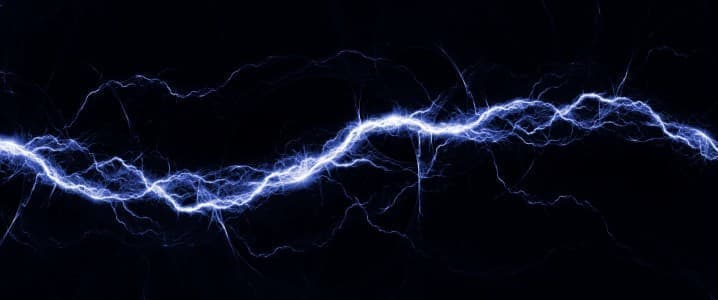Well, it happened once again. Sales of electricity in the US declined in 2019 by a significant 2.8%, despite solid domestic economic growth with real GDP increasing 2.3%. Sales across all categories of users—residential, commercial and industrial— all fell. To put this in context electricity sales have fallen in five of the past ten years.
From 2010-2019 electricity sales actually declined by a slight 0.1% while real GDP rose 22%, the population increased 7% and industrial production rose 17%. Note especially the last number. It has been an easy (and we believe lazy) claim to attribute every slackening period of electricity demand to a weak or disappearing manufacturing sector. In this ten-year period of industrial growth, electricity sales to industrial customers nevertheless declined by 2%.
In the face of this economic and population growth, where did electricity demand actually go? One example of a relatively large new commercial power user is a server farm—a computer facility storing data. Given their high constant energy needs on a 24/7 basis, some policy makers worried about the impact of this new, incremental demand on our energy consumption. However, and despite their size, these facilities have become highly efficient users of electricity and consume less than 2% of US electricity output.
Similarly lighting and HVAC systems for commercial marijuana cultivation, an initial cause for concern regarding electric supply problems in some localities, now supposedly accounts for 1% of electricity consumption. One suspects that some of that demand existed before widespread legalization, so where is the growth? Bitcoin is another new usage supposed to gobble up our electricity at an extraordinary pace. The best we can say, based on fuzzy global estimates, is that bitcoin mining uses perhaps 1% of electricity consumed in the US. What’s more, bitcoin miners — like other large commercial and industrial power consumers— have become far more efficient in their electricity consumption. Related: Oil Prices Rise As Market Expects Large OPEC+ Cut
Server farms, pot farms, bitcoin mines and even electric vehicles—why don’t these new, supposedly prodigious consumers of electricity push upward electricity consumption in the aggregate? We suggest two explanations. First, has to do with the nature of a commodity like electricity. All users large and small want some benefit that electricity provides like refrigerated produce, hot water for bathing or a cool room to escape summer’s heat. But no one wants to use more electricity simply for its own sake. That makes no sense economic or otherwise. In fact quite the contrary. Consumers of any commodity work relentlessly to become more efficient consumers of that commodity.
Second, the annual drip-drip-drip of efficiency measures applied to electricity consumption throughout the economy offsets new sources of demand. Lower consumption due the switch to more energy efficient LED lighting by itself may have offset a large part or all of the growth in demand from the three new uses.
So what will propel electricity sales growth in the future? Presumably continued expansion of electrification of transportation as well new inroads in commercial and residential heating and cooking. The trend we see is consumers electrifying more aspects of daily existence in order to lower their carbon emissions, voluntarily or otherwise. And these are really big markets for electricity, unlike the servers, weed growers and bitcoin miners that seem to garner much of the popular press’s attention. But even here, we don’t expect competitors to stand still. The fans of the hydrogen economy have stirred, as witness the surge (before the coronavirus crash) of hydrogen-related stocks. And natural gas distributors will also seek to offer “green” alternatives or “renewable natural gas” as typified by a recent proposal to “mine” chicken droppings on the Delmarva Peninsula. Related: Here’s Why Oil Prices Should Go Higher
After reviewing the most recent electricity growth numbers, it still seems clear that electricity producers will have to work hard to increase sales as consumers become increasingly efficient in their usage. Nor will competitors simply go away. This leaves the typical electric company with a choice. It can attempt to drive its top line growth by, for example, fully embracing moves to increase electrification throughout the economy. Or, reflecting an expected increase in capital intensity, US electric companies may shift even more of their costs to a simple monthly charge even less reflective of actual consumer usage.
And this reflects a simple fact of the electricity business. The actual product itself, particularly in small increments is cheap. But the vast installed delivery infrastructure behind it still requires enormous financial support. If we want service quality to remain high new investment must be made and financed. As we enter a replacement cycle for much of our aging electric utility infrastructure, how we choose to pay for it may again become an issue for policy makers to grapple with.
By Leonard Hyman and William Tilles
ADVERTISEMENT
More Top Reads From Oilprice.com:
- What’s Next For Omani Oil?
- Lukoil: 1 Million Bpd OPEC+ Cut Send Oil To $60
- EV Battery Breakthrough: Twice The Range, Five Minutes To Charge



















I live in an area with lots of hydropower. We have a long history of promoting electric streetcars and trains so that we serve enough load to maintain sales.